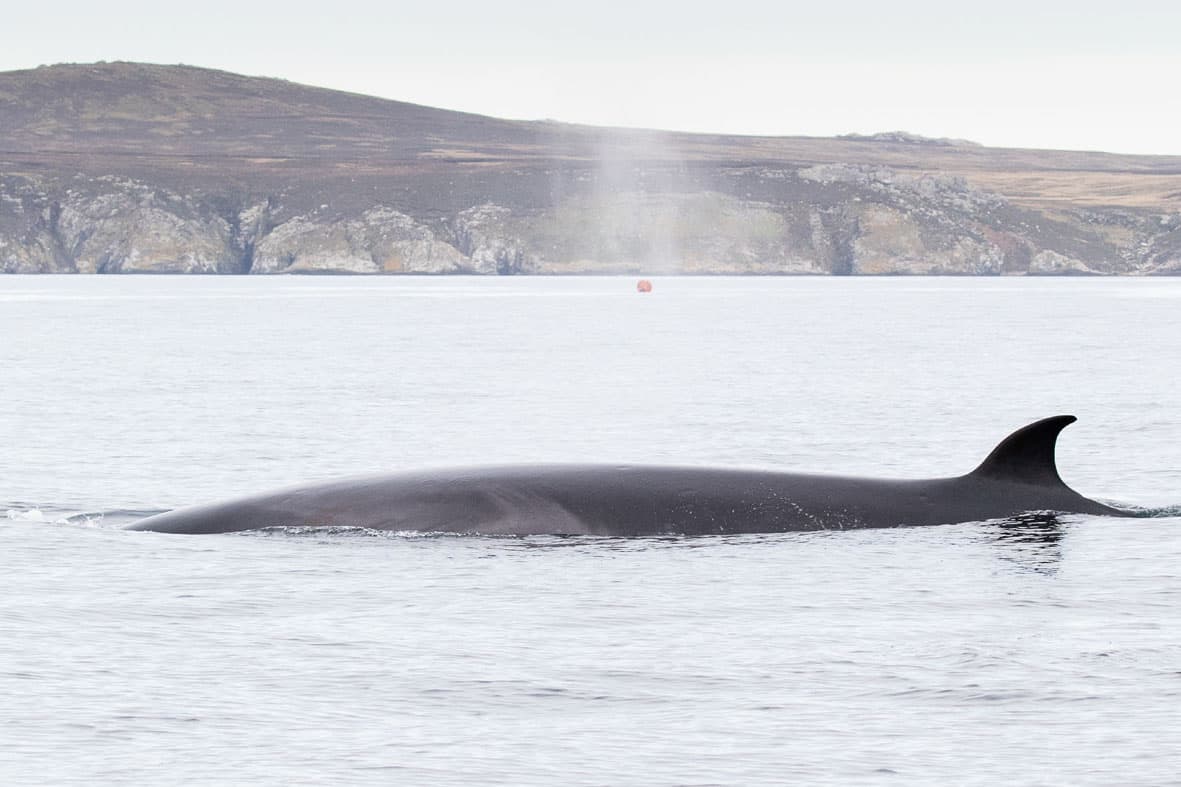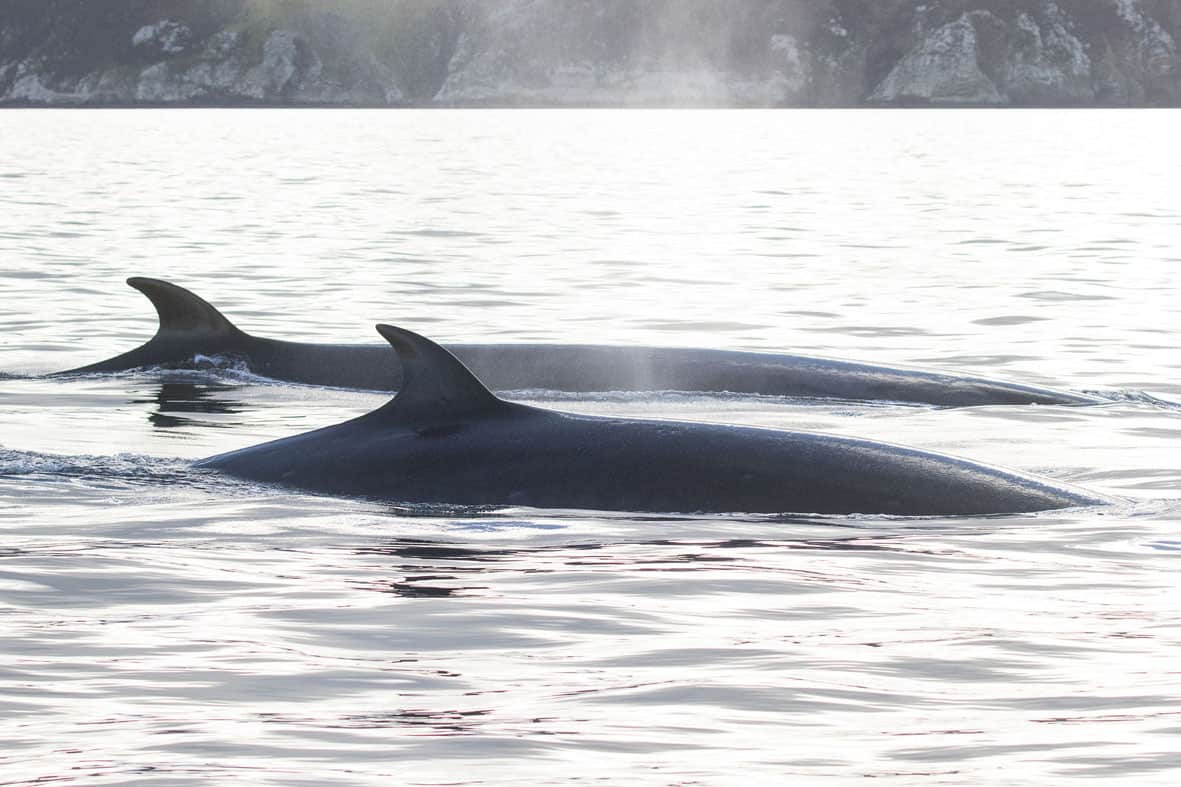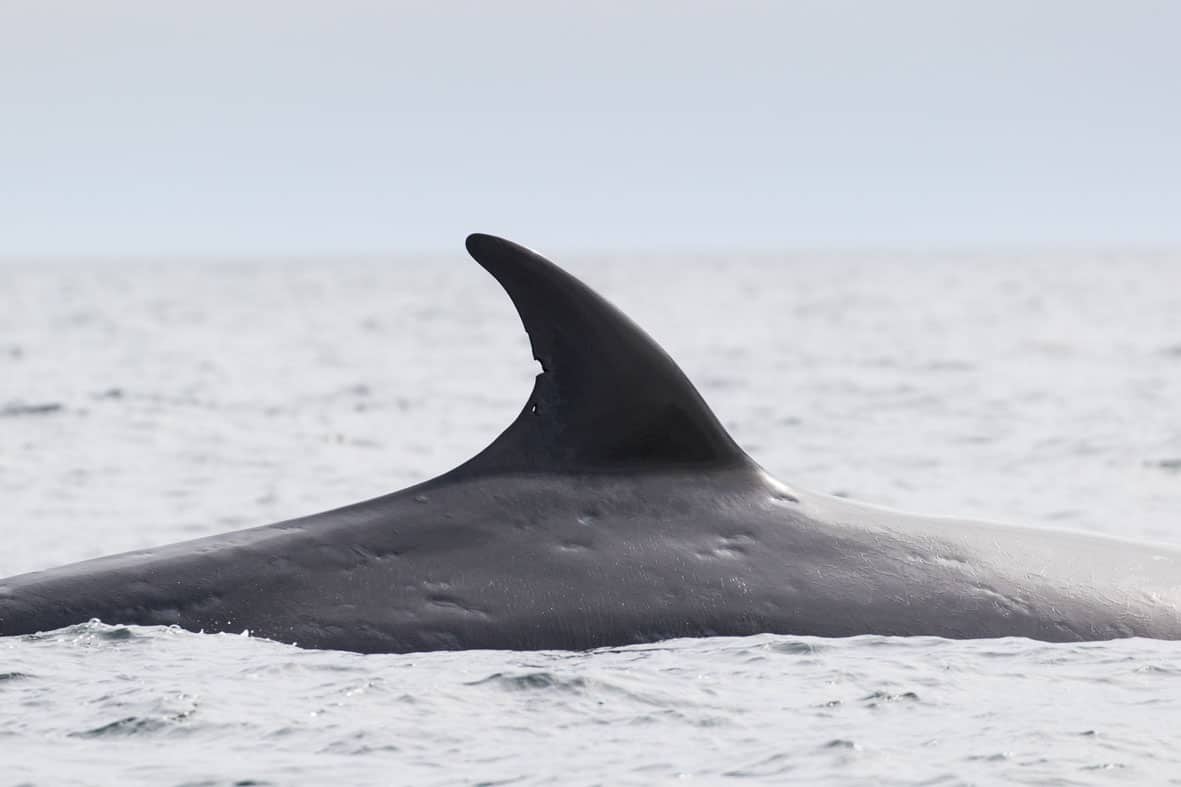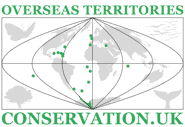
Sei Whales in the Falkland Islands
This article was contributed by Caroline Weir and featured in the August 2017 edition of UKOTCF’s Southern Ocean Working Group newsletter
Falklands Conservation (FC) has carried out research projects on sei whales in the Falkland Islands since 2016. The sei whale is classified as an endangered species on the IUCN Red List and, in most parts of its global range, it occurs in oceanic habitat where it is rarely encountered by scientists. In the Falkland Islands, local inhabitants have reported an increase in sei whale occurrence in recent decades and the species is frequently observed in shallow coastal waters, making the region an excellent locality to initiate some of the first field studies worldwide.
FC work commenced with a European Union BEST 2.0-funded project investigating the occurrence of sei whales in the Berkeley Sound candidate Key Biodiversity Area (cKBA) (East Falkland), and their interactions with human users of the region. Fieldwork was carried out between January and June 2017, comprising shore-based monitoring from the Cape Pembroke lighthouse, together with 26 boat surveys and six aerial surveys of the Berkeley Sound cKBA. The work focussed on identifying the whale species occurring in the region, collecting data on their spatial distribution and behaviour, estimating population size and investigating diet through the collection of faecal samples. A concurrent project, funded by the Royal Society for the Protection of Birds (RSPB), aimed to collect genetic information on the sei whales in Berkeley Sound, through biopsy sampling to acquire small skin and tissue samples from live whales.

More recently, a project that was jointly-funded by FC, the RSPB, and the Falkland Islands Government (FIG), was carried out on sei whales in West Falkland, concentrating on the Queen Charlotte Bay cKBA and the King George Bay cKBA, which had both been proposed for their high densities of baleen whales. Fieldwork occurred from a sailing vessel between February and April 2018, collecting information on sei whale spatial distribution, relative abundance, behaviour and diet, as well as conducting feasibility studies on the use of acoustics and drones to study the species.
Together, these projects have provided a wealth of information on sei whales in the Falkland Islands that will inform their conservation and management, as well as increasing community awareness of the species in the Islands. The 2018 yacht survey revealed that sei whales were found throughout Falkland shelf waters, in addition to their occurrence in the three cKBAs specifically investigated as study sites. The species was recorded in shallow waters of around 15 m depth in areas close (<1 km) to shore, but also in more open exposed waters offshore to at least 100 m depth. Whales in both Berkeley Sound and West Falkland appeared to use Falkland coastal waters primarily as a feeding ground, with numerous observations of defaecations at the surface and the successful collection of 26 faecal samples for analysis. The results of the Berkeley Sound work indicated that all faecal samples contained the hard parts of lobster krill Munida gregaria, which seems to represent a key prey species for Falkland sei whales.
“Photo-identification” was carried out at both sites, with a combined total of over 25,000 high-quality images being taken to identify individual whales from markings (scars and nicks) on their flanks and dorsal fins. At least 87 individual whales were photo-identified in Berkeley Sound in 2017, with some animals staying in the cKBA for only a day while others remained for several weeks. Similar work in West Falkland is still undergoing analysis, after which we will examine the datasets also for photographic re-captures between East and West Falkland.

The genetic work has diversified to incorporate tissue samples from stranded whales, the collection of bone samples from stranded animals and from the New Island whaling station (courtesy of the New Island Conservation Trust), as well as the biopsy samples from 13 whales in Berkeley Sound. The British Antarctic Survey (BAS) will be analysing the samples to investigate genetic diversity and population structure, which is fundamental to managing the animals over the longer-term and across wider geographic areas. They will also be carrying out diet analysis using DNA and isotope methods on the faecal and bone samples. Since the Falkland Islands appear to represent a feeding area for sei whales, improved knowledge of their prey species should aid with understanding when and where whale aggregations are likely to occur.
To date, the work by FC and their partners has highlighted the importance of Falkland shelf waters for endangered sei whales, emphasising the need to take this species and KBAs into account when considering human activities, development and marine management in the region. Funding for two further field seasons in 2019 and 2020 has been provided by the UK’s Darwin Plus fund, and is set to include acoustic monitoring and an additional study site in Falkland Sound as well as continuing the work in Berkeley Sound, where the greatest overlap occurs between sei whales and human activities such as shipping, the oil and gas industry and marine ecotourism.
The 2017 Berkeley Sound sei whale report is available for download.
Caroline Weir, Sei Whale Project Officer, Falklands Conservation
